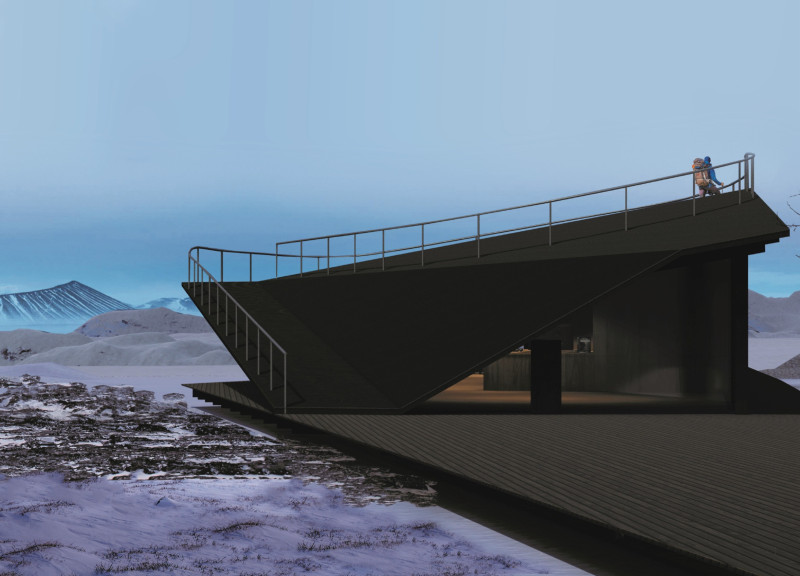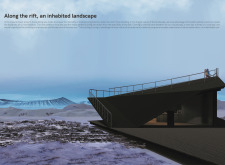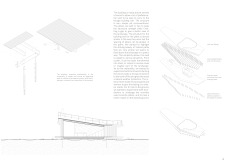5 key facts about this project
The project is located in the fragile landscape of Iceland, specifically near the Kvennagjá rift. It integrates a structure that serves multiple functions while maintaining a respectful relationship with the natural environment. The design concept focuses on enhancing visitor interaction with the landscape, allowing for various experiences that connect people to the unique geological features of the area.
Design Concept and Context
A hybrid approach is taken in the design, combining different programs within one unified structure. The building's footprint aligns with existing paths created by visitors, which helps to connect it to the landscape. This strategic placement near the fault line allows users to engage with the geological characteristics of the site, offering an opportunity to observe the dynamics of the landscape.
Visitor Experience
The design rethinks the typical observation tower by encouraging visitors to engage beyond static viewpoints. As people move upward through the structure, they encounter changing views that reflect the varying weather patterns of the region. A larger roof structure accommodates diverse activities, providing shelter while inviting users to explore both interior and exterior spaces.
Geological Engagement
An important feature is the inclusion of a small museum dedicated to Grjótagjá. This aspect enhances the experience for visitors by connecting them to the local geology. The building is placed in such a way that it preserves clear views of the surrounding landscape, enabling appreciation of the geological scars formed by the earth’s movements without obstruction from complex structures.
Materials and Details
The building predominantly uses wood, which is favorable for prefabrication and simplifies transportation to the remote site. Burnt wood is chosen for its durability and resistance to weather, further linking the design to its environment. Warm wood paneling in the interior creates a welcoming atmosphere. Carefully designed pathways lead visitors through the rugged terrain, adapting as necessary to provide access to surrounding caves and facilitate outdoor exploration.






















































